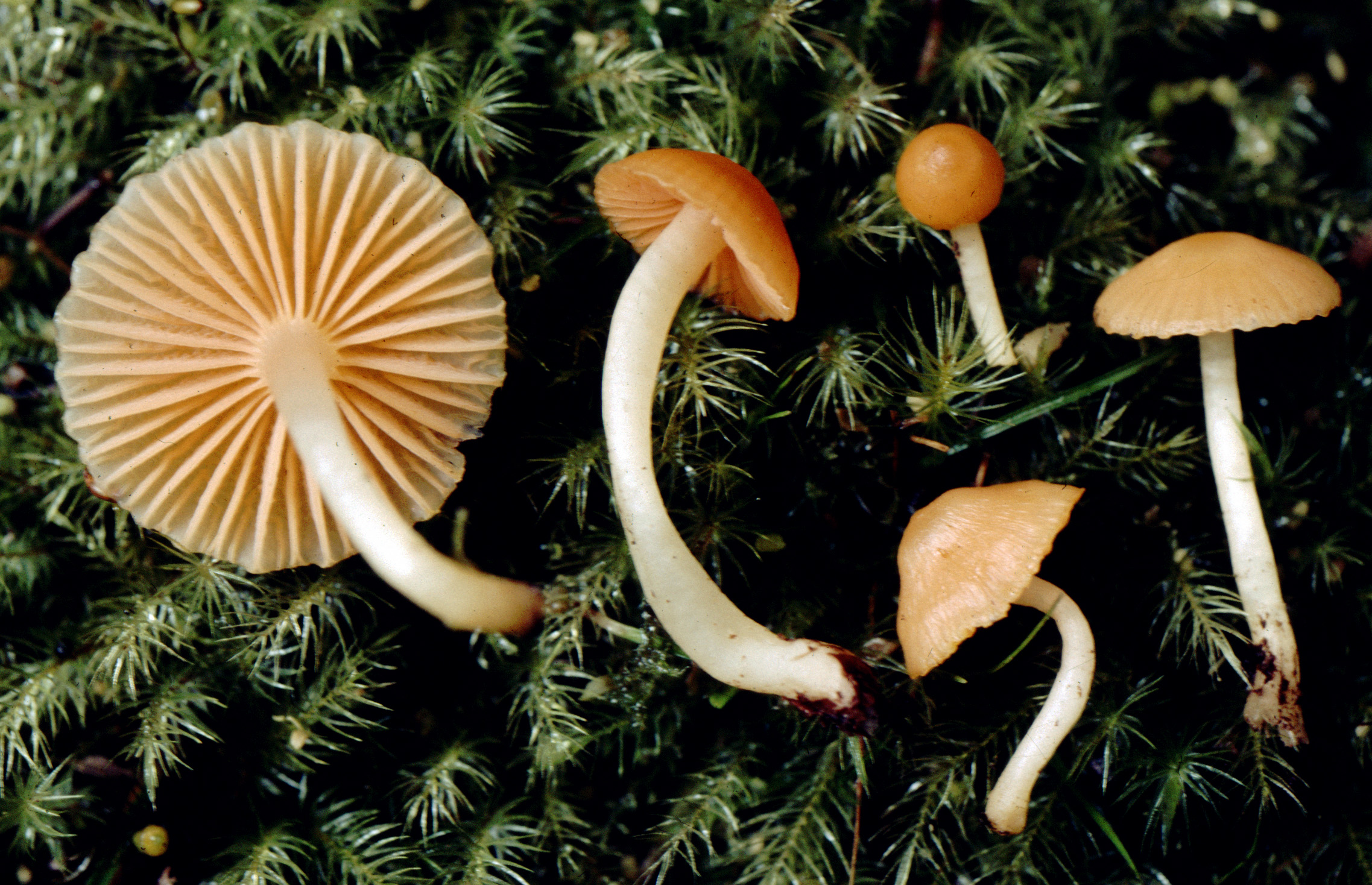- Proposed
- Under Assessment
- Preliminary Assessed
- Assessed
- VUPublished
Humidicutis peleae Desjardin & Hemmes
Search for another species...
- Scientific name
- Humidicutis peleae
- Author
- Desjardin & Hemmes
- Common names
- IUCN Specialist Group
 Mushroom, Bracket and Puffball
Mushroom, Bracket and Puffball- Kingdom
- Fungi
- Phylum
- Basidiomycota
- Class
- Agaricomycetes
- Order
- Agaricales
- Family
- Hygrophoraceae
- Assessment status
- Published
- Assessment date
- 2018-02-22
- IUCN Red List Category
- VU
- IUCN Red List Criteria
- A3e+4e
- Assessors
- Vellinga, E.C.
- Reviewers
- Dahlberg, A.
Assessment Notes
The content on this page is fetched from The IUCN Red List of Threatened Species: https://www.iucnredlist.org/species/125434726/125435590
Justification
Humidicutis peleae is a native species of the native wet-montane forests of Hawaii, occurring on several islands. Its occurrence in Hawai’i is threatened by the extirpation of the overstory tree in its habitat (viz. Metrosideros polymorpha, killed by Ceratocystis fimbriata), road construction, and in general the invasion of non-native plants and other organisms. The reasons to list this species as Vulnerable under criterion A3(e) is that more than half of the known locations are on Hawai’i, in the zone where Ceratocystis fimbriata occurs. Ceratocystis kills the overstory tree, Metrosideros polymorpha, on which Humidicutis relies for its habitat. Indirectly it is the effect of an introduced parasite of the tree. As a result of this main threat in combination with others, a reduction in population size of more than 30% is projected within the span of 3 generations (30 years) for this species.Geographic range
This species is endemic to Hawaii. It is known from isolated locations on four islands of the Hawaiian archipelago: Hawai’i, Kaua’i, Maui, and Moloka’i.Population and Trends
Currently known from collections made at 11 different localities, on four different islands, one on Kaua'i, two on Moloka'i, one on Mau'i, and seven on Hawai'i. Unknown from Oahu. Six of the seven Hawai'i collections were made in isolated patches of native forest along the Saddle Road.
Population Trend: decreasing
Habitat and Ecology
The spirocarps grows solitary to scattered, on bryophyte-covered soil or among bryophytes on rotten logs of ohi'a (Metrosideros polymorpha) or stems of hapu'u (Cibotium spp.) in Montane Wet Forest (Ohi'a/Hapu'u Forest) or Montane Mesic Forest (Ohi'a Forest), in one locality in duff under Monterey Cypress (Cupressus macrocarpa) adjacent to Montane Wet Forest (Desjardin and Hemmes 1997). Nutritional mode not known, presumably biotrophic, but not ectomycorrhizal (Seitzmann et al. 2011). Dispersal by wind-borne spores.Threats
Habitat destruction is the biggest threat to the occurrence of this species, first of all because of a rapidly spreading deadly disease of the overstory tree (Metrosideros polymorpha; ʻŌhiʻa), caused by Ceratocystis fimbriata (Keith et al. 2015). Ceratocystis fimbriata kills mature trees and since it was first detected in the Kuna and Hilo Districts on the Big Island in Hawai'i, it has spread, and reached in 2016 the area where H. peleae occurs on Hawai'i, and is threatening all habitats in which Metrosideros is the dominant tree. The name of the disease, Rapid ʻŌhiʻa Death, is an indication of its sudden appearance and fast work. This will change the whole ecosystem of the island, as M. polymorpha is dominant in many different habitats (https://cms.ctahr.hawaii.edu/rod/THEDISEASE/DISTRIBUTION.aspx). As of 2017, the disease has only been found on Hawai'i, but it is feared that it will move to the other islands. The seven known localities for this species are all in the area where the disease has been found.Secondly, habitat destruction by widening the Saddle Road on Hawai'i [the Big Island] along which this species occurs. So far, the kipukas (tree islands among old lava streams) where this species is found have been spared. Thirdly, invasion of non-native plants and other organisms is a constant threat for all native forests of the Hawaiian islands.
